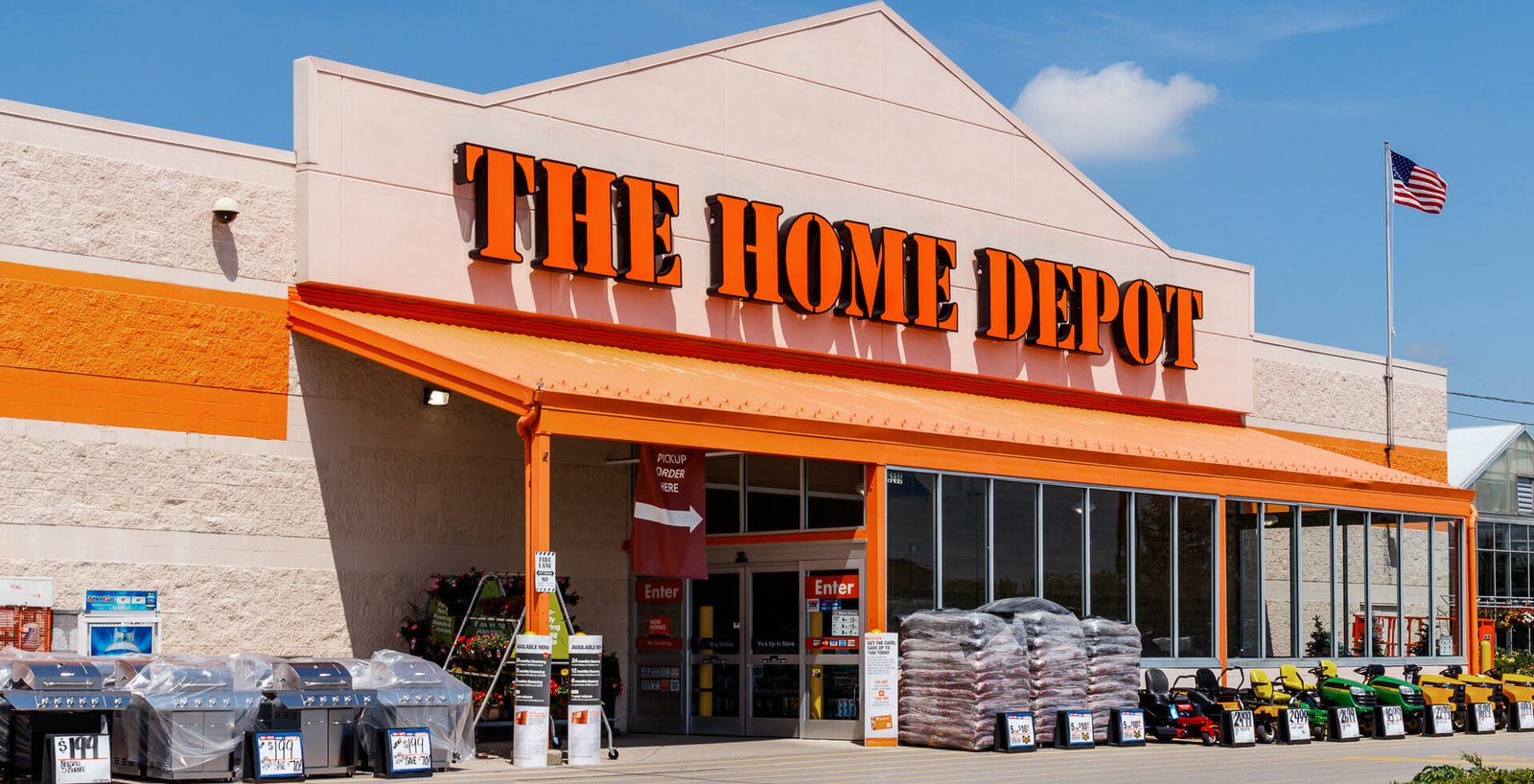Store Pulse Home Depot: A Complete Guide to Optimization and Insights
Store Pulse Home Depot, a leader in the home improvement retail space, provides its employees and management teams with a powerful tool called Store Pulse. This platform is designed to streamline operations, enhance productivity, and optimize customer service. In today’s fast-paced retail environment, Store Pulse at Home Depot has emerged as an essential platform for managing on-the-ground operations and improving the overall customer experience. This article will delve into all aspects of Store Pulse, providing comprehensive insights into its functionalities, uses, benefits, and much more.
What is Store Pulse at Home Depot?
Store Pulse Home Depot is an operational management system specifically tailored to meet the demands of a bustling retail environment. Built with an emphasis on real-time data, Store Pulse enables Home Depot managers and employees to monitor various metrics, track inventory, manage tasks, and respond to customer needs efficiently. The platform is integral to Home Depot’s daily operations, ensuring that each store can meet customer demands while maintaining operational excellence.
How Store Pulse Optimizes Home Depot Operations
Store Pulse functions as the heartbeat of Home Depot stores, providing real-time data and performance insights that empower employees to make quick, informed decisions. By managing inventory levels, tracking employee performance, and identifying potential issues, Store Pulse optimizes productivity across multiple departments. This feature allows Home Depot to consistently meet customer expectations, minimizing delays, and maximizing the efficiency of each store.
The Importance of Real-Time Data in Retail
For a retailer like Home Depot, real-time data is crucial. Store Pulse gives managers and employees immediate access to data regarding sales, inventory levels, and customer demand. This timely information helps the company adapt to changes in demand, ensuring that shelves are stocked, employees are assigned efficiently, and customer queries are answered quickly. Real-time data enables Home Depot to stay ahead of competitors by offering responsive, data-driven customer service.
Key Features of Store Pulse at Home Depot
Task Management
Store Pulse offers a task management feature that streamlines and automates the allocation of daily responsibilities to employees. By organizing tasks based on priority and relevance, Store Pulse ensures that teams focus on essential activities, improving store efficiency and customer satisfaction.
Inventory Tracking
Inventory tracking is another core feature of Store Pulse. By providing real-time updates on product availability, this tool helps managers anticipate restocking needs and prevent out-of-stock situations, which is vital for maintaining customer trust and loyalty.
Employee Performance Monitoring
With Store Pulse, managers can monitor employee productivity and identify areas that require improvement. This feature fosters a performance-driven culture, enabling Home Depot to optimize its workforce and deliver superior service.
Customer Feedback Integration
Home Depot integrates customer feedback directly into Store Pulse, allowing managers to make adjustments based on customer experiences. This real-time feedback loop is vital for continuous improvement in customer service.
Benefits of Store Pulse for Home Depot Employees
Store Pulse benefits not only Home Depot’s management team but also its employees. With clear task assignments, performance tracking, and real-time guidance, employees feel supported and motivated to deliver their best. Store Pulse also reduces the potential for task overlap or miscommunication, creating a smoother workflow.
Enhancing Customer Experience with Store Pulse
A seamless customer experience is at the heart of Home Depot’s mission. Store Pulse enables employees to anticipate customer needs and address them promptly. By tracking popular items, predicting out-of-stock situations, and facilitating fast restocking, Store Pulse minimizes waiting times for customers, resulting in a more satisfying shopping experience.
Store Pulse’s Role in Inventory Management
One of the essential aspects of Store Pulse is its role in inventory management. For a massive retailer like Home Depot, keeping track of inventory across all locations is a daunting task. Store Pulse’s automated inventory management system keeps track of all product quantities in real-time. This feature is instrumental in maintaining inventory accuracy and preventing stock shortages, which ultimately enhances customer satisfaction and drives sales.
The Store Pulse Dashboard: A Comprehensive Overview
The Store Pulse dashboard provides a comprehensive view of store metrics, including sales, inventory, and employee performance. The user-friendly interface allows employees and managers to navigate the system easily, access critical information, and make data-driven decisions. Each feature of the dashboard is designed to provide insights that can be acted on quickly to improve store performance.
Reducing Operational Costs with Store Pulse
Home Depot benefits significantly from Store Pulse by minimizing operational costs. Through efficient task allocation, inventory management, and performance tracking, the system ensures that all resources are utilized effectively. Store Pulse’s streamlined processes reduce unnecessary expenditures and optimize store productivity, resulting in higher profit margins.
Implementing Store Pulse: Training and Onboarding
Successful implementation of Store Pulse requires proper training and onboarding of employees. Home Depot ensures that its staff receives comprehensive training on using Store Pulse to maximize the platform’s effectiveness. Regular training sessions, refresher courses, and real-time support are all part of Home Depot’s strategy to ensure that employees are proficient in using Store Pulse.
Store Pulse: A Key to Competitive Advantage in the Retail Sector
In the highly competitive retail sector, efficiency and customer satisfaction are paramount. Store Pulse gives Home Depot a competitive edge by ensuring its operations are efficient, its inventory is well-managed, and its employees are performing at their best. This comprehensive operational system is a critical factor in Home Depot’s ability to maintain its position as a leader in the home improvement industry.
Challenges of Implementing Store Pulse
While Store Pulse offers significant benefits, implementing such a comprehensive system comes with challenges. These challenges include the need for thorough employee training, potential resistance to new technology, and the necessity of regular software updates. However, Home Depot has addressed these challenges by providing support resources and continuous training to ensure a smooth transition and ongoing efficiency.
Store Pulse and Future Innovations at Home Depot
Home Depot’s commitment to innovation is evident in its continual updates and enhancements to Store Pulse. Future updates may include AI-driven insights, more robust data analytics, and predictive inventory management capabilities. As Home Depot explores new technologies, Store Pulse will likely evolve to include features that further enhance efficiency and customer experience.
How Store Pulse Supports Home Depot’s Sustainability Goals
Sustainability is an important priority for Home Depot, and Store Pulse plays a role in supporting these goals. By optimizing inventory and reducing waste, Store Pulse helps Home Depot minimize its environmental footprint. Efficient resource allocation and task management also contribute to energy savings, aligning with Home Depot’s commitment to sustainable practices.
How Store Pulse Affects Supply Chain Management
Store Pulse provides insights into supply chain operations, enabling Home Depot to manage its supply chain more effectively. By identifying potential issues early on, Home Depot can reduce supply chain disruptions and improve the flow of products from suppliers to store shelves, ensuring that customers can always find what they need.
Integrating Customer Service with Store Pulse
Home Depot has integrated customer service metrics into Store Pulse, allowing employees to respond quickly to customer inquiries, complaints, and feedback. This integration helps Home Depot maintain high customer satisfaction levels by ensuring that issues are addressed promptly and effectively.
The Role of Store Pulse in Employee Satisfaction
Employee satisfaction is crucial for any retail business, and Store Pulse helps Home Depot maintain a positive work environment. By providing employees with clear expectations, ongoing feedback, and the tools to complete their tasks efficiently, Store Pulse fosters a more productive and satisfying work experience.
Improving Store Layout and Merchandising with Store Pulse
Store Pulse includes features that assist with store layout and merchandising decisions. By analyzing customer buying patterns, Store Pulse helps Home Depot managers optimize product placement to drive sales and improve the shopping experience. This feature enables stores to maximize floor space while ensuring customers can easily find popular items.

Store Pulse’s Impact on Seasonal Sales
Home Depot experiences fluctuations in demand based on seasonal sales patterns, such as summer garden products and winter holiday decorations. Store Pulse allows managers to adjust inventory and staff allocations based on these seasonal trends, ensuring that stores are prepared to meet customer demand during peak shopping periods.
Enhancing Marketing Strategies through Store Pulse
Data from Store Pulse can also influence Home Depot’s marketing strategies. By understanding customer preferences and sales trends, Home Depot can develop targeted marketing campaigns to boost sales for specific products, seasonal promotions, or local events.
How Store Pulse Affects Employee Scheduling
Home Depot uses Store Pulse to optimize employee schedules based on peak shopping times and anticipated store traffic. This scheduling flexibility ensures that Home Depot has sufficient staff during high-demand hours while avoiding overstaffing during slower periods, balancing operational efficiency with employee well-being.
Store Pulse’s Role in Customer Loyalty Programs
Home Depot’s customer loyalty programs benefit from insights derived from Store Pulse. By analyzing customer purchase history and preferences, Home Depot can personalize loyalty rewards and promotions, enhancing customer loyalty and increasing the frequency of repeat visits.
Training Programs Integrated with Store Pulse
Home Depot provides ongoing training programs integrated with Store Pulse to ensure employees remain updated on the latest best practices and technology updates. This commitment to continuous training allows employees to maximize the system’s benefits, ensuring a well-prepared, knowledgeable workforce.
Store Pulse Data Security Measures
Data security is a top priority for Home Depot, especially when it comes to customer and operational data stored within Store Pulse. The platform is equipped with advanced security protocols to protect sensitive information, ensuring compliance with industry standards and safeguarding against potential breaches.
Key Takeaways: Why Store Pulse is Vital for Home Depot
In conclusion, Store Pulse is a crucial component of Home Depot’s success in the retail industry. Its robust features, including real-time data analysis, task management, inventory tracking, and performance monitoring, allow Home Depot to operate efficiently while maintaining high levels of customer satisfaction. Store Pulse supports Home Depot’s mission to be a reliable, customer-centered, and forward-thinking retailer.
FAQs
How does Store Pulse benefit Home Depot employees?
Store Pulse streamlines task management, improves communication, and provides clear guidance, helping employees to perform more effectively and reducing confusion.
What role does Store Pulse play in inventory management?
Store Pulse provides real-time inventory tracking, which helps Home Depot prevent stockouts, plan restocking, and maintain accurate inventory levels.
How does Store Pulse impact customer service at Home Depot?
Store Pulse integrates customer feedback and service metrics, enabling managers and employees to address customer needs promptly and improve satisfaction.
Does Store Pulse improve Home Depot’s sustainability efforts?
Yes, by optimizing resources, reducing waste, and enhancing inventory efficiency, Store Pulse supports Home Depot’s sustainability initiatives.
What challenges are associated with implementing Store Pulse?
Challenges include the need for comprehensive employee training, overcoming resistance to new technology, and ensuring software updates are applied smoothly.
How does Store Pulse impact employee scheduling at Home Depot?
Store Pulse helps Home Depot create efficient schedules by analyzing peak times and adjusting staff allocations, enhancing productivity while avoiding overstaffing.




